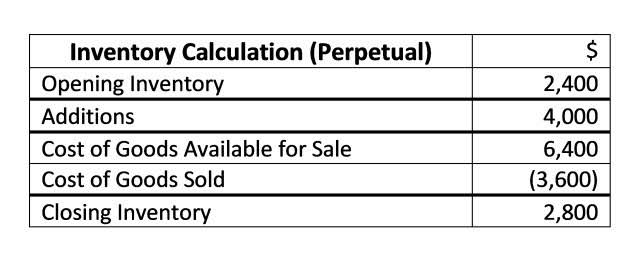
However, it’s important to note that it may be less known in areas where the use of Roman numerals is not common and in non-English speaking countries who may use other abbreviations. If you had a commercial property valued at $92 million, a modern writer would likely abbreviate the expression by saying it was worth $92M. In accounting and financial analysis terms, we know that reads as 92 thousand dollars, but the context allows us to understand the expression’s intent. The term “MM” originates from the Roman numeral M, which stands for one thousand. It is commonly used in financial documents, accounting, and stock market where mm meaning space is a concern.
- No one should make any investment decision without first consulting his or her own financial advisor and conducting his or her own research and due diligence.
- If, say, you use it for both units and dollars in the same document, separate the different categories so your readers don’t get confused.
- It ensures consistency in global financial documents and contracts.
- This is particularly important in cross-border transactions and investments, where accurate financial information is crucial for decision-making.
- The Indian numeral system is slightly different from what Western countries use while incorporating Arabic numerals.
- CFI is on a mission to enable anyone to be a great financial analyst and have a great career path.
Millimeter and Other Customary Units

This is particularly important in scenarios where quick decision-making is required, such as during mergers and acquisitions or when assessing investment opportunities. Digital calipers are an excellent tool for precise measurements in millimeters. They offer digital readouts, making it easy to obtain accurate measurements. Yes, millimeters are widely used in construction and architecture to ensure precise measurements. Architects and builders rely on millimeter measurements for everything from door sizes to building plans. You won’t typically see the power of 10 rule applied to financial documents today.
📆 Date: May 3-4, 2025🕛 Time: 8:30-11:30 AM EST📍 Venue: OnlineInstructor: Dheeraj Vaidya, CFA, FRM

In some European countries, for example, “M” is used to denote millions, which can lead to confusion if not clearly defined. This underscores the importance of context and clarity in financial documentation. When preparing reports for an international audience, it is advisable to specify the notation used to avoid any potential misunderstandings. Moreover, the use of “MM” aligns with the principles of transparency and comparability advocated by international accounting standards. Organizations like the International Financial Reporting Standards (IFRS) emphasize the need for consistent and comparable financial statements. Interior Design Bookkeeping By adopting “MM,” companies can ensure that their financial reports meet these standards, enhancing their credibility and attractiveness to global investors.

Real-World Applications of Millimeter (mm)
- You won’t typically see the power of 10 rule applied to financial documents today.
- Here’s a fun example to understand why small units are important.
- This guide will explore how the notation should be used, as well as alternative symbols that are used in practice.
- The finance term MM, denoting ‘Million’, is important due to its wide usage in financial documents, reports, and communications to represent large quantities of money.
- The millimeter, often abbreviated as “mm,” is a unit of length in the metric system, and it plays a crucial role in various fields, from engineering and architecture to everyday life.
- That letter isn’t Greek or Roman, but the average reader would likely understand the concept.
Although different accountants have adopted Roman and Greek traditions (or transitioned to modern abbreviations), context is what unlocks the knowledge needed to understand the term. Most abbreviations used for large cash sums today come from ancient Greek and Roman societies. We still use Roman numerals for some accounting methods, while large figures are designated by the Greek alphabetic equivalent of the specific term. The term enables clarity and consistency, reducing the risk of misunderstandings due to different interpretations of number notation. In various aspects of finance such as budgeting, financial analysis, reporting, and forecasting, the use of MM aids in ensuring accuracy and precision.

- Most abbreviations used for large cash sums today come from ancient Greek and Roman societies.
- Once you get above that amount, you’d say billion or trillion instead of using the numbers.
- The seven letters in Roman numerals are I, V, X, L, C, D, and M.
- In financial statements, the abbreviation “MM” is commonly used to denote millions.
- Therefore, understanding and using this term is crucial in the field of finance.
In this example, we intentionally chose a piece of analysis that contained various different units, such as dollars and shares. When an analyst must present various different types of units, it is recommended to add a “units” column so that each item contains a label for easy reference. The Roman numerals MM are frequently used to designate that the units used in presenting information (financial and non-financial) are in millions. The example below shows Accounting Periods and Methods how figures can be portrayed in millions. This conversion is a fundamental one to remember when working with the metric system.
- Can you imagine measuring tiny things using units like yards or miles?
- This uniformity is crucial for analysts and investors who rely on these documents to make informed decisions.
- It also helps professionals focus on key insights without getting lost in numerical details.
- In accounting and financial analysis terms, we know that reads as 92 thousand dollars, but the context allows us to understand the expression’s intent.
- The use of MM is not just about convenience; it also plays a role in standardizing financial reporting.
